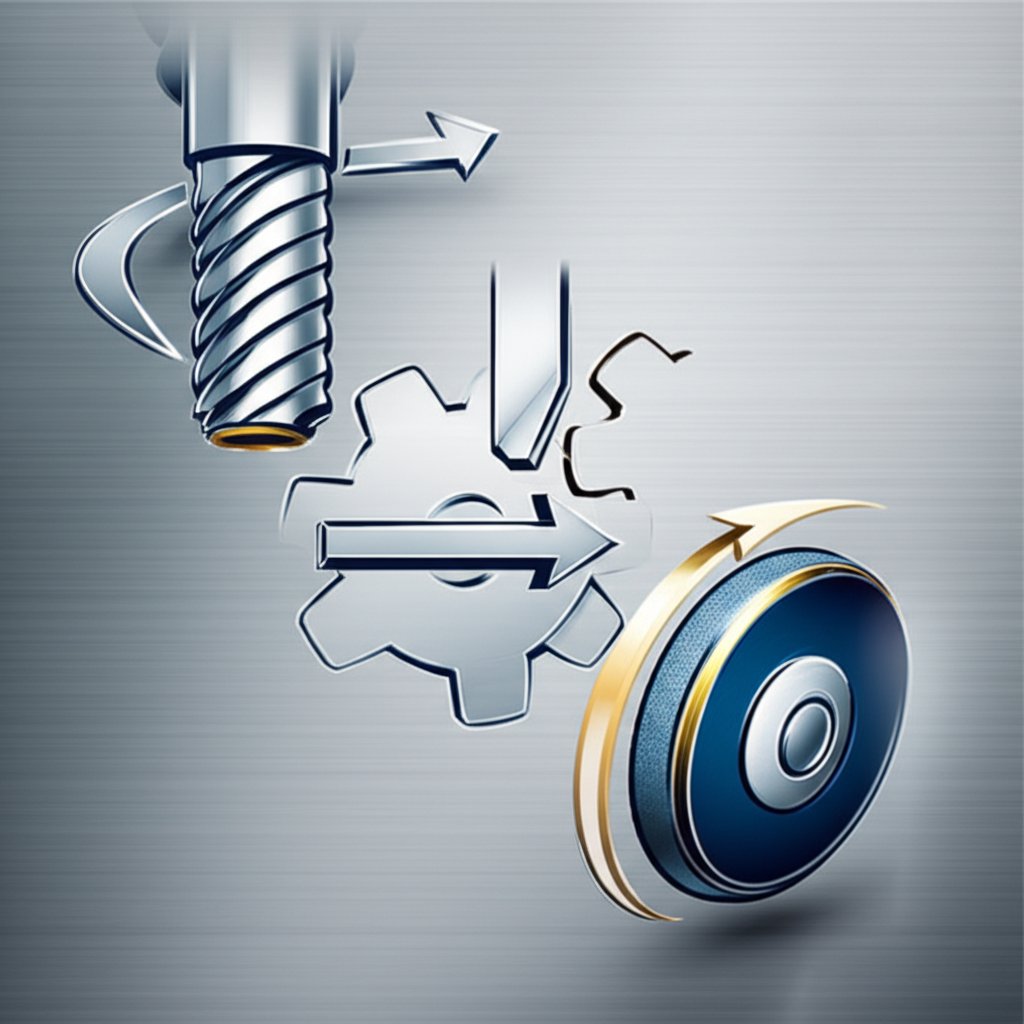CNC Machining for Custom Gears: A Technical Overview

TL;DR
CNC machining for custom gears is a high-precision manufacturing process that uses computer-controlled automated tools to create specialized gears according to exact specifications. This advanced method is essential for industries requiring complex geometries and tight tolerances. Key techniques include gear hobbing for high-volume production, shaping for internal gears, and grinding for achieving ultra-fine surface finishes on materials like hardened steel and specialized alloys.
Understanding CNC Machining for Custom Gears
Computer Numerical Control (CNC) gear machining is a sophisticated manufacturing process where automated machine tools produce precision gears based on digital designs. According to Yijin Solution, this technology enables the creation of complex gear geometries with exceptional accuracy, achieving tolerances as tight as 5-10 micrometers, which is impossible with manual methods. The process is critical for original equipment manufacturers (OEMs) and other sectors that rely on components tailored to specific, high-performance applications.
The primary advantage of CNC machining lies in its precision and repeatability. Unlike traditional methods that depend on mechanical setups, CNC systems use software to control every aspect of the cutting operation. This ensures that every gear produced, from the first to the thousandth, is identical. This level of consistency is vital in applications like aerospace, automotive transmissions, and medical devices, where even minute deviations can lead to system failure. As noted by Gear Motions, the service is ideal for clients who need custom gears made-to-print or require engineering assistance to perfect a design.
This technology offers several key benefits that make it superior to older manufacturing techniques:
- Unmatched Precision: Computer control minimizes human error, allowing for the creation of gears with extremely tight tolerances that ensure smooth, efficient operation.
- Complex Geometries: CNC machines can produce intricate tooth profiles, such as those found in helical and bevel gears, that are difficult or impossible to create with manual tools.
- Material Versatility: The process is compatible with a wide range of materials, from various plastics and nylons to hard metals like carbon steel, bronze, and high-alloy exotics.
- Repeatability: Once a design is programmed, a CNC machine can produce identical parts consistently, which is crucial for both high-volume production and spare part manufacturing.
Key Manufacturing Processes in Custom Gear Cutting
Creating a custom gear involves more than just a single machine; it requires a suite of specialized processes tailored to the gear's type, material, and intended application. Leading manufacturers like Precision Roll Solutions offer a range of services to produce gears that meet the highest standards of quality and performance. The most common and critical processes are gear hobbing, shaping, and grinding, each serving a distinct purpose in the manufacturing workflow.
Gear hobbing is often the primary choice for producing spur and helical gears, especially in high volumes. It is a continuous generating process where a cutting tool called a hob, which resembles a worm screw, rotates and cuts into a rotating workpiece. This method is highly efficient and precise for external gears. For internal gears or gears with features that would obstruct a hob, gear shaping is used. This process employs a reciprocating cutter that gradually forms the gear teeth. It is more versatile than hobbing for certain complex designs but is typically a slower process.
The final step for many high-performance gears is grinding. After the initial teeth have been cut via hobbing or shaping, gear grinding refines the tooth surfaces to achieve an exceptionally smooth finish and precise profile. This process is crucial for applications that demand low noise, minimal vibration, and maximum durability, such as in high-speed transmissions or precision robotics. Below is a comparison of these key techniques.
| Process | Best For | Key Feature |
|---|---|---|
| Gear Hobbing | High-volume production of external spur and helical gears | Continuous and highly efficient cutting process |
| Gear Shaping | Internal gears, complex profiles, and low-to-medium volume runs | Versatile reciprocating cutter suitable for obstructed areas |
| Gear Grinding | High-precision finishing for superior surface quality and accuracy | Refines tooth profiles to reduce noise and enhance durability |
Essential Materials for Custom-Machined Gears
The performance, longevity, and cost of a custom gear are heavily dependent on the material from which it is made. Selecting the right material is a critical decision that balances factors like load capacity, operating environment, wear resistance, and budget. The versatility of CNC machining allows for the use of a wide array of materials, from robust metals to specialized engineering plastics, ensuring an optimal solution for nearly any application.
Metals are the most common choice for industrial gears due to their strength and durability. Steel, particularly hardened and alloy steels like 4140 or 8620, is favored for high-load, high-stress applications such as automotive transmissions and heavy machinery. Other metals like brass and bronze are often selected for their corrosion resistance and self-lubricating properties, making them suitable for marine and certain industrial environments. Aluminum is a lightweight option for applications where reducing mass is a priority.
In addition to metals, engineering plastics and polymers play a significant role in modern gear design. Materials like Delrin (Acetal) and Nylon are popular for low-load applications where noise reduction, low friction, and cost-effectiveness are important. These materials are often used in consumer products, office equipment, and medical devices. The choice of material ultimately dictates the gear's ability to withstand its operational demands over its service life.
- Hardened Steel: Offers exceptional strength and wear resistance. Ideal for high-torque applications like transmissions and industrial gearboxes.
- Stainless Steel: Provides excellent corrosion resistance, making it suitable for food processing, marine, and medical applications.
- Brass & Bronze: Known for low-friction properties and resistance to corrosion. Often used for worm gears and in environments where sparks are a hazard.
- Aluminum: A lightweight option with good strength-to-weight ratio, used in aerospace and robotics where minimizing mass is critical.
- Plastics (Nylon, Acetal/Delrin): Offer quiet operation, are self-lubricating, and cost-effective. Best for low-load, low-speed applications.

How to Select a Custom Gear Manufacturing Partner
Choosing the right manufacturing partner is as crucial as the gear design itself. A capable and reliable supplier ensures your components meet specifications, are delivered on time, and function flawlessly. The selection process should be a careful evaluation of a company's technical capabilities, quality control systems, and overall service. A strategic partner can provide valuable insights that improve your design and reduce costs.
Before you even begin your search, it's essential to define your project requirements clearly. This includes the gear type (spur, helical, etc.), material specifications, required tolerances, quantity, and desired lead time. With these parameters, you can start evaluating potential suppliers. Look for companies that not only have the right equipment but also demonstrate deep expertise. For instance, a partner offering design assistance, such as the Gear Design Wizard from eMachineShop, can be invaluable for optimizing performance and manufacturability.
For those in the early stages of product development, a partner like XTJ can accelerate the process with comprehensive formative manufacturing services for high-quality rapid prototypes. Their expert engineering team provides Design for Manufacturability (DFM) feedback, which is critical for ensuring that initial concepts are viable for production. This integrated approach, backed by ISO 9001:2015 certification, helps bridge the gap from prototype to full-scale production seamlessly.
Follow these steps to ensure you choose the best partner for your needs:
- Evaluate Manufacturing Capabilities: Confirm the supplier has the necessary technology for your project, including specific processes like hobbing, shaping, or precision grinding. Verify their stated capabilities regarding size, pitch, and precision levels (e.g., AGMA class).
- Assess Quality Control and Certifications: A reputable manufacturer should have a robust quality management system, ideally with certifications like ISO 9001. Inquire about their inspection processes and equipment to ensure they can verify the tolerances you require.
- Inquire About Engineering and Design Support: A true partner does more than just cut metal. Ask if they offer DFM analysis, material selection guidance, or reverse engineering services. This expertise can prevent costly mistakes and improve the final product.
- Request Quotes and Compare Lead Times: Obtain detailed quotes from several potential suppliers. Look beyond the price to compare stated lead times, shipping costs, and any additional charges for tooling or setup.
- Consider Logistics and Communication: While a local supplier might offer convenience, a national or international partner may provide specialized capabilities. Evaluate their communication responsiveness and project management style to ensure a smooth collaboration.





